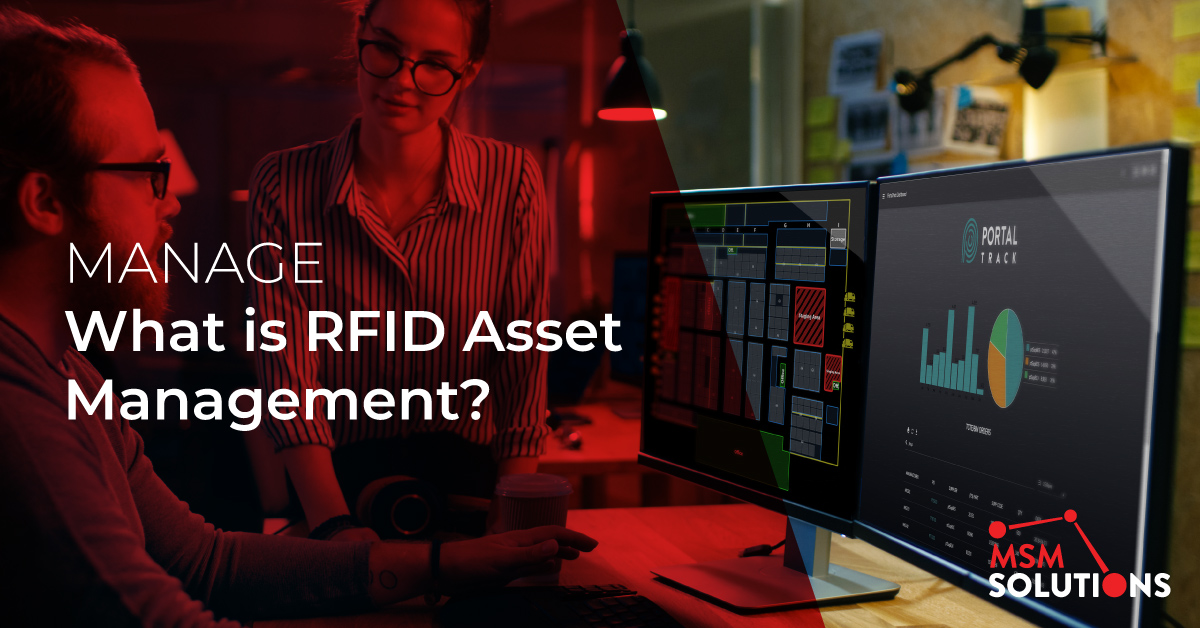It’s never been more cost effective or easier to automate asset management processes and ensures that you have accurate and timely inventory information at your fingertips by utilizing RFID technology.
Radio Frequency Identification (RFID) technology is a realm in the computerized recognition field that has been gaining momentum in the last decade and is now considered a primary means to advance data management processes, in comparison to earlier data capture technologies such as the barcode. A variety of RFID devices and related systems have been developed to satisfy a wide range of applications. The use of RFID tags to uniquely identify a person or object is now easily achieved. The devices are scalable and will perform at greater distance ranges when using superior grade labels or labels powered by batteries.
RFID technology has not only progressed inventory control through distance and reading power, but also through the types of labels; labels that work in humid environments, inside electronic devices, in clothes, inside screws, etc.
What is an RFID Asset Management System?
RFID offers a multitude of benefits for asset management. This technology starts with the identification of each asset through the implementation of intelligent labels and subsequent tracking of the asset with the help of a specialized reader.
The RFID Asset Management Systems starts with a label that has a unique identification that cannot be changed or eliminated from that label. A reader connects to one or several antennas which send radio frequency signals to the label. The label information is transmitted by radio frequency to the antenna and from the antenna to the reader. The data is then collected in the cloud and reports are generated in real-time.
Implementing an RFID based asset management system is not easy as it requires time, effort and money.
RFID Systems boast labels that fit on or into any item with UHF technology, allowing identification at distances up to 10 meters from the reader.
When to use an RFID Asset Management System?
- There is no direct line of vision to the item; thus it is not possible to use a barcode label,
- It is necessary to read multiple labels at a time,
- Information needs to be updated and accessed in real time,
- Or to simply improve the productivity of the asset management process.
RFID Technology is the best solution to streamline inventory and asset management because it guarantees a fast reading of each and every object and its locations in real-time.
RFID Analytics provides a new level of real-time operational intelligence that empowers companies to forecast future outcomes, prevent operational disruptions, and improve supply chain performance.
What are the benefits of an RFID Asset Management System?
- Accurate Data Gathering – The use of an RFID intelligent identification system will generate accurate real-time information and control of the material assets of your organization.
- Centralized Database: All asset information is centralized and accessible in a single database. No more questioning if you’re making informed decisions based on the latest information.
- Instant Location of Assets – Know where your fixed assets are located at any time.
- Facility Mapping – Gain instant, real-time access to a complete visual overview of the location of inventory assets, improving overall efficiency and saving time and money.
- Smart Investment – By having greater information and control over assets, it is much easier to determine which areas may need more funding or what inventories need replenishing.
- Faster Inventory – With the advantage of an RFID Asset Tracking System, you can inventory product up to 100 items per 1 second, making the management of goods a simple, fast, and easy task.
- Anywhere Access – Asset information is accessible anywhere there is internet access. Information can be stored automatically in the cloud, giving access to managers, owners, and those responsible for the goods so that inventory can be truly managed in real time
- Integration with Other Platforms – An RFID System can integrate with other data platforms such as WMS, WCS, and various accounting systems to provide accurate and real-time data, enabling comprehensive intelligent business decisions.
- Customized Reporting – Customized dashboards and metrics are available to visually empower verifiable data-driven analysis that is key to achieve better business decisions.
- Real-Time Notifications: – Safeguard your processes by generating real-time notifications and initiating actions via alarms, video, PLC interface, and email when certain events occur or conditions are met.
What are the problems derived from poor asset management system?
It is very important to maintain exhaustive control of the properties, plant, and equipment to avoid the most common inventory problems.
- Uncertainty in inventory: subpar or inaccurate methods of asset control can result in loss of assets, increased expenses, lack of necessary product or inventory, and/or replenishing items or equipment unnecessarily.
- Excessive consumption of human and economic resources: It is clear that the traceability of fixed assets can be a real headache if you do not have the right system. Manual inventory of assets requires paying a team of people or re-assigning workers from your payroll to perform inventory functions, taking them away from vital administrative or income-producing rolls. Doing this several times a year is expensive and time-consuming.
- Ignorance of the status or location of your assets: Some assets have a useful life that can be extended with proper maintenance. However, proper maintenance becomes very difficult when inventory processes are manual and sporadic, leading to the accumulation of dated or deteriorated goods.
MANAGE: Actionable Business Intelligence MSM Solutions and PortalTrack help bring your digital DNA to life and create value and actionable insight into your business so that you can manage your inventory in real-time enabling you to make more informed and timely decisions.


